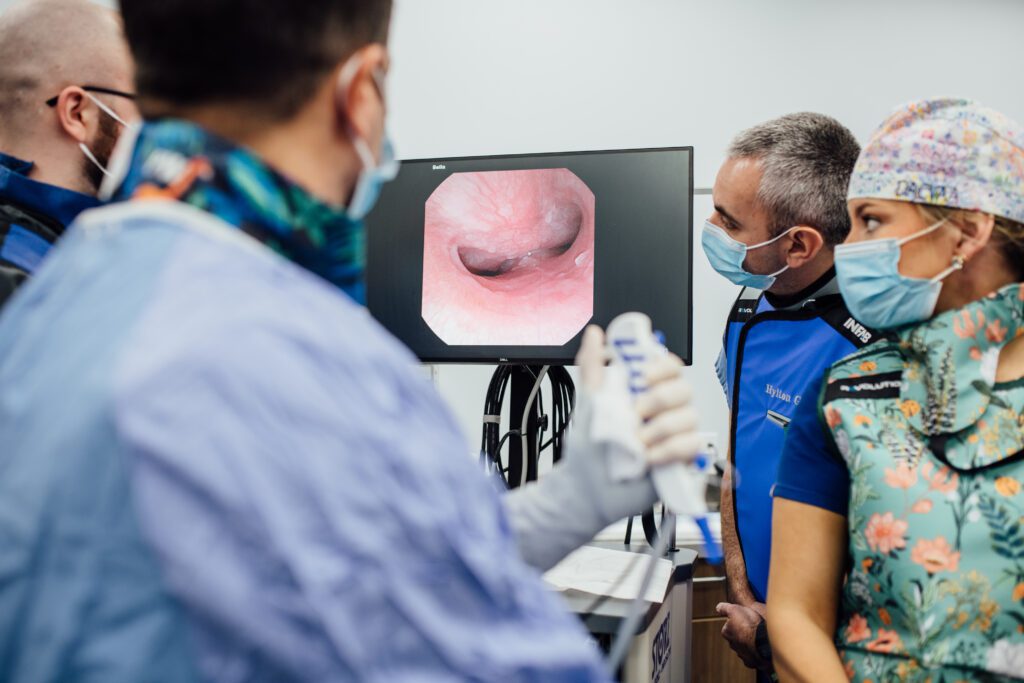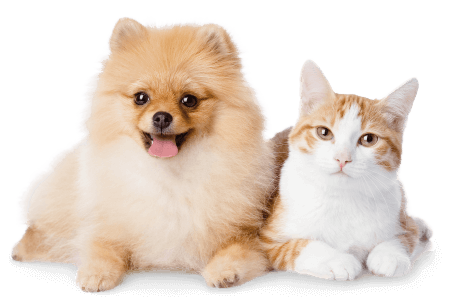Internal Medicine Procedures
Bone Marrow Aspirate
A bone marrow aspirate is performed by an oncologist, surgeon or Internal Medicine specialist to evaluate the cause of a patient’s abnormal cell counts. It is typically performed while your pet is under general anesthesia, but can sometimes be done using a combination of sedation and local anesthesia and takes only 5 to 10 minutes to complete.
To conduct the aspirate, a special needle is gently inserted into a numb area of bone, usually in the hip or shoulder area, after the area has been shaved and cleaned. The needle is then passed into the bone marrow cavity to obtain the fluid and/or marrow biopsy sample containing growing red and white blood cells and platelets. The fluid is sent to a pathologist who specializes in reading bone marrow samples. Results usually take one to two days for the results of the fluid analysis and about seven business days for core biopsy samples.
Sometimes, medications are prescribed for your pet while waiting for the bone marrow cytology results, but may be changed when final results are available. Your pet may be slightly uncomfortable near the bone marrow aspiration site and a short course of pain medications may also be prescribed.
Scopes

Minimally invasive scope procedures are performed by our Internal Medicine specialists. They are performed under general anesthesia after a pet has been fasted for 12 or more hours. Most procedures take anywhere from 25 minutes to an hour and are considered low-risk.
- Gastrointestinal Endoscopy – Gastrointestinal endoscopy enables an internist to view an image of the gastrointestinal tract and stomach on a digital video screen. It can help obtain samples of the gastrointestinal wall, remove foreign objects or place a feeding tube. It’s most often used for patients with chronic vomiting, diarrhea, weight loss or poor appetite.
- Cystoscopy – Cystoscopy enables an internist to view an image of your pet’s urinary tract on a digital screen and sometimes obtain small biopsy samples of the bladder or urethral wall. Cystoscopy may be recommended for patients with blood in the urine, incontinence, straining to urinate, recurrent urinary tract infections or tumors affect the bladder or urethra.
- Bronchoscopy – Bronchoscopy is used to visualize a pet’s trachea and lungs. A biopsy instrument or tiny brush can be passed through the endoscope to obtain small samples of the tracheal or bronchial wall. Often, small amounts of sterile saline are flushed through the scope and into the lower airway, then immediately retrieved by suction in a process called a bronchoalveolar lavage (BAL). BAL allows the specialist to obtain samples of tissue and cultures of the lung or airway. Bronchoscopy is recommended for patients with chronic coughing, difficulty breathing, or abnormalities noted on a chest radiograph.
- Rhinoscopy – Rhinoscopy is used to visualize the nasal passages, localize and visualize a lesion, or biopsy an affected area. Nasal foreign bodies can be removed via rhinoscopy and, in some cases, flushing of material can improve nasal airflow. It is typically recommended for patients with chronic nasal discharge, chronic sneezing, nasal bleeding, nasal congestion, decreased nasal airflow, or suspicion of nasal foreign body.
Joint Taps
To perform a joint tap or arthrocentesis, a local anesthetic is applied to the joint area. A needle is then inserted into the joint and fluid is drawn (aspirated) for further review by our lab.
Feeding Tubes
If a pet is unable or refuses to eat enough food to support their nutritional requirements, a feeding tube may be necessary. Inadequate nutrition can damage many organ systems, increase complications and can affect your pet’s ability to recover. A feeding tube allows your pet to consume an optimal diet for their disease, which will increase their survival time and quality of life. Tubes may also be utilized to administer medication and fluids.
A pet must be under general anesthesia for feeding tube placement. At Veterinary Specialty Center, we most commonly place esophagostomy tubes (E-tubes) and gastrostomy tubes (PEG-tubes). E-tubes are placed directly into the esophagus while PEG-tubes are placed directly into the stomach either surgically or with the guidance of an endoscope.
Pets on a feeding tube are fed 3-4 times a day with a diet that consists of a slurry, which is a mix of canned food blended with water. The tube site needs to be checked twice a day and bandage care is also necessary. Your pet will be able to eat and drink normally with the feeding tube in place. The amount of food fed through the tube is dependent upon how much your pet consumes independently. Tubes are then removed once a pet is eating well on their own for about a week. With proper care, a pet can remain on a feeding tube for weeks to months.
